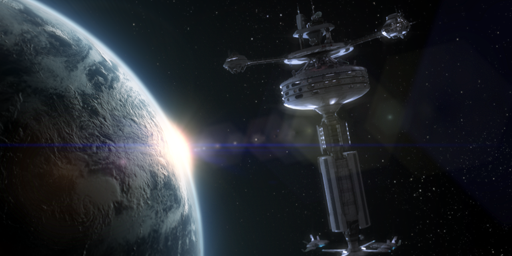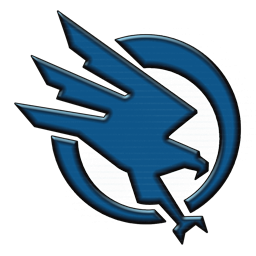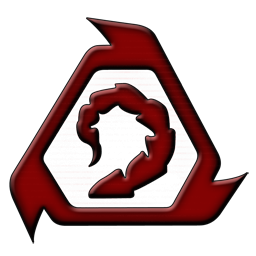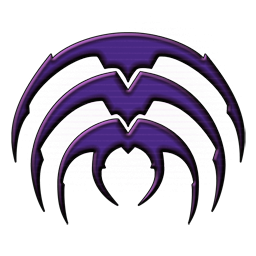Welcome, Commander
It is the year 2047. The world is covered by vast swathes of Tiberium, a parasitic substance of unknown origin that arrived on Earth over fifty years earlier. The Global Defense Initiative (GDI) is trying to maintain the peace in the lesser affected areas, while the Brotherhood of Nod attracts the less fortunate and desperate into its secretive ranks under is enigmatic leader Kane. And all the while, we are being watched from afar... this is
Tiberium Wars.
About the game
Command & Conquer 3: Tiberium Wars is the third installment in the
Command & Conquer Tiberian series, which was started by Westwood Studios (of
Dune 2 fame) with
Command & Conquer: Tiberian Dawn in 1995. Before completing the sequel, Westwood Studios were bought by Electronic Arts, however, the team continued to develop and release
Command & Conquer 2: Tiberian Sun in 1999, and the expansion
Firestorm in 2000. However, the old team was subsequently dismissed, and the
Command & Conquer franchise has since been in the hands of Electronic Arts, and
Tiberium Wars is their first game in this series. The "expansion pack"
Kane's Wrath was developed under commission by third-party developer BreakAway Games and released in late 2008; however, its fundamental gameplay is rather different even where gameplay elements from the original game are concerned, and it is a standalone game in all but its name. Our
Kane's Wrath Portal is dedicated entirely to this expansion. The Tiberian series concluded with the release of
Command & Conquer 4: Tiberian Twilight in March 2010, for which we have our own
Command & Conquer 4 Portal.
Quick links to faction-specific information
- GDI structures, units, support powers and upgrades
- Nod structures, units, support powers and upgrades
- Scrin structures, units, support powers and upgrades
- Miscellanea, including Mutants, Visceroids and capturable structures.
- A unified tech tree of structures, units, upgrades and support powers for Tiberium Wars and Kane's Wrath.
Return to the Game Info and Strategy index.Gameplay
Command & Conquer 3 (henceforth "C&C3") is a real-time strategy game, in which you control one of three factions, the Global Defense Initiative (GDI), the Brotherhood of Nod, or the alien Scrin invaders. The action happens on a fully three-dimensional map that allows rotating and zooming, all powered by Electronic Art's Strategy Action Game Engine (SAGE). While superficially sporting three distinct, asymmetric factions, there is a lot of symmetry in the tech trees, structures and base building principles. The basic interface is point-and-click mouse-operated, but the use of keyboard shortcuts is indispensable for competitive play.
Apart from the usual interface elements that have become standard in real-time strategy games, some notable features of
Tiberium Wars include: Unit stances (hold fire, hold ground, guard, aggressive), crushing (big crushes small), different move commands (stubborn move to get from A to B, reverse-move, attack-move to attack any enemy on the way, force-move to run over things rather than attack them), formations, planning mode, and queuing of instructions (including most of the previously mentioned ones and unit abilities). So it is possible, for example, to tell an MCV to reverse-move from A to B, then force-move from B to C and then unpack, all with one quick succession of mouse clicks and keystrokes.
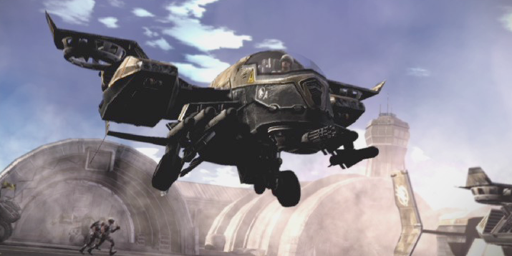
Multiplayer matches can be played on a local network, but the primary interest here at GameReplays lies in competitive online multiplayer matches, usually one-vs.-one, that are hosted in outsourcing by Gamespy. Every game is automatically recorded and may be saved as a "replay". Uploading replays to GameReplays is one of the principal interests of this site, and allows others to see great players in action, to admire skill and to learn from mistakes, or just to have a good time.
Commentating ("Shoutcasts" and "VoDs")
Games built on the SAGE engine, like
Command & Conquer 3 and its expansion, have a feature that allows you to add a commentary track to a replay. Each commentary comes with a camera track, which the commentator can decorate with freehand pen drawings (for instance to draw circles around units or arrows to explain a strategy), and an audio track that the commentator records directly into the replay through a microphone. The commentated replay is played back like an ordinary replay, only that you now also have the voice of the commentator on the soundtrack and you can choose to watch through the commentator's eyes. Commentating a replay is also known as
shoutcasting or
gamecasting, and a shoutcast is a great way to make an replay even more interesting and exciting for others to watch. A shoutcast requires a running installation of the game, but the downloaded file is very small and the viewer has the freedom to move the camera around freely or follow one of the players' points of view.
By contrast, another way of commentating a replay is the so-called
video on demand, or "VoD" for short, in which the commentator uses an external application to record his own viewing of the replay into a video, to which he adds his own voiceover, and possibly other soundtracks like background music. The video may also be edited to cut out parts of the replay, or repeat them in slow-motion, etc. A VoD is just an independent video, so it is non-interactive, comes in a relatively large file and is more complex to produce than a shoutcast; however, it can be watched by anyone (without requiring a copy of the game) and can potentially be edited to great effect.
For those interested in shoutcasting, L3g3nd4ry has written a nice
guide to shoutcasting, or visit the
TW Commentating Forum or
KW Commentating Forum.
Factions
The Global Defense Initiative (GDI) was founded by the United Nations some time in the late 20th century, with the purpose of fighting global terrorism -- which mainly referred to the increasingly well organized hostilities brought on by the Brotherhood of Nod. After GDI's resounding victory in the First Tiberium War, it has become the de-facto global army, assisting all organized nations and people to maintain order in the face of the ecological Tiberium disaster.
Funded and armed by the world's richest countries and drawing on long-standing military traditions, GDI is an efficient, professional armed force. Its arsenal consists of a solid line-up of regular infantry, light and heavy armor and several types of air (and space) support. GDI can draw on tactical airlifts during a battle and call in reinforcements via air- or space-drop, and of course it maintains its awesome set of orbital ion cannons. The recent attempts to fight back Tiberium have lead to an increased use of sonic weaponry ever since the Second Tiberium War, although sonic weapons see a much stronger use in
Kane's Wrath.
The Brotherhood of Nod is a secretive underground organization with a paramilitary structure that has been operating world-wide since at least the late 20th century, but there are indications that it is much, much older. Very little is known about the Brotherhood's enigmatic leader Kane, who does not seem to age and has an uncanny ability to survive apparent destruction, but he commands the immediate obedience and loyalty of almost all the followers of Nod, for many of whom he is a type of prophet. Nod appeals mainly to the disenfranchised, the down-trodden, the desperate -- in short, those who feel abandoned by the wealthy powers.
It is unknown what Nod's designs were before the 1990s, but since the advent of Tiberium on Earth, Kane's attention has been almost exclusively fixed on revealing the secrets surrounding this mysterious, yet extremely dangerous substance. Kane, and by extension the Brotherhood, believes that Tiberium holds the key to the future of humanity, and they are not beyond human experiments and the development of Tiberium-based weapons to further their goals.
As Tiberium started spreading across the globe, the Brotherhood has been boosting its resources by harvesting Tiberium and has taken to open warfare. Seen by the organized nation states as terrorists, it is the primary focus of the Global Defense Initiative's operations. Nod recruits its followers mainly in areas of political instability and insecurity, and it is organized as an underground militia. Its only hope of challenging the mighty power of the united armed forces of GDI is by using guerrilla tactics of hit-and-run and stealth to out-maneuver their opponent. Stealth technology has been a staple of Nod's arsenal since the days of the First Tiberium War. The Second Tiberium War saw the use of subterranean logistics to move around unseen, but by that time Nod had also made significant progress with its Tiberium research and had started employing cybernetic technology. In the present, third great conflict, Nod has perfected land and airborne stealth technology and has added some powerful new machinery to its arsenal.
The militia mentality of Nod reflects in the fact that basic armed troops are weak and considered expendable. Nod's basic militants come as nine men a squad but are still hopelessly inferior to GDI's regular infantry. The iconic Attack Bike, while outrunning any other unit, is usually deployed in large packs that make it make it back in one piece as often as they don't. And Nod even manages to recruit fanatics who are determined enough to strap on an explosive belt and make that final sacrifice for the Brotherhood. But this rather desperate line-up of front-line units is only the cover for the highly sophisticated elite weaponry that Nod likes to keep out of sight until ready to strike. Shadow Teams fly in from angles unseen and blow up buildings, a lone Stealth Tank can wreak havoc to an entire enemy base, and so can stealthed bomber aircraft. Flame tanks strike fear in the hearts of the enemy's soldiers, and given enough time, Nod will bring the full force of its fearsome Avatar Warmechs to bear down on any remaining opposition.
While it has become common belief that Tiberium is of extra-terrestrial origin for a long time, nobody had any idea where it came from and whether it was an accident or by a conscious act. We still do not know the answer to the origins of Tiberium, but it is now clear that the alien race of the Scrin has been closely monitoring the progress of Tiberium on Earth. It appears to be their standard procedure to wait until a planet is sufficiently "transformed" by Tiberium, and then to arrive for a type of "harvest" operation. The Scrin themselves are very well adapted to Tiberium (and the ion storms that prevail in areas of high infestation), to the extent that Tiberium seems to form an integral part of their bodies.
The Scrin on Earth are merely the escort of a harvest operation that did not expect to meet any resistance. Their ground units have little resemblance to ordinary infantry and armored vehicles and instead consist of
live organisms - and Tiberium-based life at that. But the arrival of the Scrin also sheds light on the increasingly frequent ion storms that ravage the Red and Yellow Zones: The Scrin air fleet is actually able to control and create ion storms, and the Scrin appear to thrive in them! Any commander facing the dreaded Storm Columns and Planetary Assault Carriers above should think twice before joining battle.
... and more
Read about Tiberium Spikes, Mutants, Visceroids and more in the
Command & Conquer 3 Miscellanea.
Veterancy
Every unit collects experience points by killing enemy units and structures. After having collected a certain number of points, the unit is promoted to a higher "rank". The required number of points depends on the price of the unit. Suppose your favorite unit, Joe, costs
n credits to train. Then the number of experience points required for Joe to get a promotion are listed below. Also, if someone else kills Joe, they get a number of experience points depending on Joe's rank.
Veteran
Required experience: 3 × n
Awarded to others for kill: 1.3 × n
Elite
Required experience: 6 × n
Awarded to others for kill: 1.6 × n
Heroic
Required experience: 9 × n
Awarded to others for kill: 2.0 × n
These values are only approximate, the actual values for real units may differ. Attacking an enemy structure actually gives experience points twice: once when the structure reaches "red" damage, and once when it is finally destroyed.
The benefits of higher ranks are as follows. Veterans deal 110% damage and have 110% hitpoints. Elite units deal 120% damage and have 120% hitpoints. Heroic units maintain the 120% damage boost, but get 150% hitpoints, and in addition their rate of fire doubles, their resistance to suppression triples and they heal automatically.
Suppression
Infantry units that come under fire will be
suppressed, meaning they drop to a prone position and try to stay low. Doing so reduces their speed to 25%, but it also means that they only take 75% damage (on top of all other damage modifiers). However, forcing a suppressed unit to move makes them more vulnerable and they take 125% as much damage as usual.
Damage and armor
To understand the weapons and armor data on the faction detail pages, you have to know how the damage system works. All weapons (and also mines and Tiberium) produce a specific damage type, which is one of the following: GUN, CANNON, SNIPER, GRENADE, ROCKET, MINE, TIBERIUM. An unarmored target will take the full damage from any weapon, but armor adds resistances. So a unit with armor value "cannon: 25%" takes only 25% of the damage from a weapon with 'cannon' damage type. Similarly, "sniper: 1%" or "mine: 1%" mean virtual immunity to sniper weapons or mine fields, respectively, while "Tiberium: 0%" means that the unit is immune to Tiberium. (Tiberium and mine immunity are available to certain Nod units via the Tiberium Infusion and Dozer Blades upgrades, respectively.)
There may be damage modifications depending on whether the weapon is surface-to-surface or surface-to-air (for example, the GDI Pitbull deals double damage to air targets).
The damage types are roughly as follows.
- 'Gun' damage is rifle and machine gun fire, strong (100%) against infantry and air but very weak (25%) against armor and structures.
- 'Cannon' damage is tank shell fire, strong (100%) against armor, very weak (25%) against infantry and 75% against structures; it is usually not available against air targets.
- 'Rocket' damage is strong (100%) against air targets and light vehicles, 75% against armor, and weak (50%) against infantry and structures.
- 'Sniper' damage is sniper rifle fire, deadly (100%) against infantry but virtually useless (1%) against anything else (short of unarmored targets like walker husks).
- 'Grenade' damage is anything explosive, strong (100%) against structures, 75% against infantry, but weak (50% or 25%) against vehicles; it is not usually available against air targets.
- 'Mine' damage is caused by land mines. It only exists as a separate damage type to allow for special resistance against mines.
- 'Tiberium' damage is caused by Tiberium exposure to wandering humans.
Area-of effect or "splash" damage means that
all enemy units within the weapon's "splash radius" receive damage from the weapon. This is extremely important to bear in mind while clumping up air units against anti-air rockets with splash damage.
Ion storms. Certain
Scrin air units receive a 75% armor and 125% damage bonus while inside an ion storm.
Damage statistics. For a list of how many strikes it takes to destroy a structure, take a look at our
Damage Guide.
Directional armor and reversing
Several vehicles have weaker armor at the sides and at the rear. Typically they would take 110% as much damage from attacks on the sides and 150% as much damage from the rear (the actual values are listed in the unit descriptions). These subtleties can spell the difference between victory and defeat, and it may be life-saving to keep one's front pointing at the enemy, even when retreating. For this purpose, most vehicles can move in reverse to depart from a hostile situation without having to turn their weaker back. Note that some vehicles move more slowly when reversing, though.
Garrisoning
Most infantry can
garrison certain buildings and vehicles. Doing so allows the infantry to fire out of the garrison (usually even with boosted sight and fire range) without taking any damage, as attacks are absorbed by the garrisoned building or vehicle.
Civilian buildings, bunkers and foxholes are the usual garrisonable structures, and they can often accommodate two or three infantry units. When such a structure gets damaged heavily, the garrisoned infantry evacuate automatically. On the other hand, the GDI's APC can only garrison one single unit, and if the transport is destroyed, the infantry is killed with it. It is possible, though, to put an infantry unit in an APC (for example a Nod ally's Black Hand) and then load the APC into a V35 Ox. The infantry can still fire out of the APC while being airlifted (behold the flying flaming APC)! The
Kane's Wrath expansion pack takes garrisoning even further by introducing a host of new, garrisonable units.
Garrisoning structures comes with a very important risk: Each faction has certain
garrison-clearing units. A single hit from such a unit will instantly kill all units that were garrisoned in a building, without damaging the building itself very much (making it ready to be counter-garrisoned immediately). Garrison-clearing units are the GDI's Grenadier Squad, Nod's Black Hand and Flame Tank, and the Scrin's Buzzers and Corrupter.
For more information on the background and history of
Command & Conquer, turn to the
next page! Or
return to the Game Info and Strategy index.


